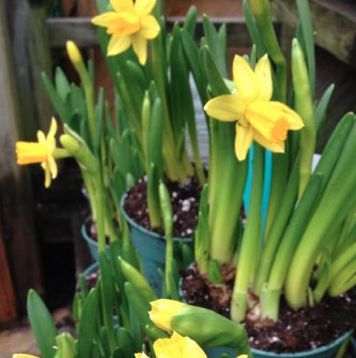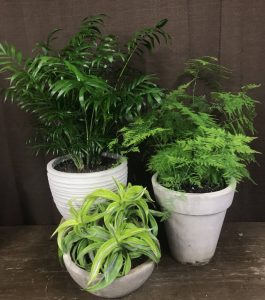 If you’re of a certain age, you well remember when houseplants were a mainstay in most houses. The home I grew up in in the 1970’s was filled with plants.
If you’re of a certain age, you well remember when houseplants were a mainstay in most houses. The home I grew up in in the 1970’s was filled with plants.
My mother tended them, each week working her way through the house with her watering can and sometimes a sponge to wipe dusty leaves.
I remember floor-size planters and smaller pots grouped together on end tables and beautiful green and variegated leaves of varied shapes and sizes. If you looked up, macrame hangers supported pretty pots filled with hoyas, pothos, creeping fig, and ivy, the trailing vines winding their way here and there.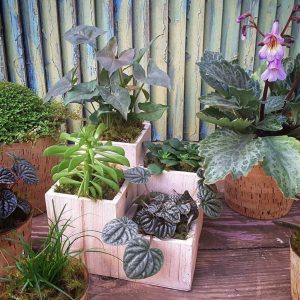
Today you can Google houseplants or look on Instagram and many similar images appear. Houseplants are making a comeback. Hallelujah, it’s about time! Whether you’re a novice with a few small pots on a windowsill in your first apartment or live in a downtown loft and need something bigger, there really is a houseplant for everyone.
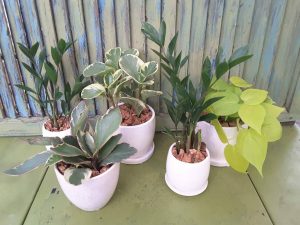 Theories abound as to why houseplants are making such a comeback. Some say it’s that younger people need something to nurture. Others say it’s cyclical, and it was just time for them to reappear. Still others say it’s because the world is in such turmoil that people are turning to their homes for comfort. Whatever the case, plants are a warm and lovely addition to any indoor space.
Theories abound as to why houseplants are making such a comeback. Some say it’s that younger people need something to nurture. Others say it’s cyclical, and it was just time for them to reappear. Still others say it’s because the world is in such turmoil that people are turning to their homes for comfort. Whatever the case, plants are a warm and lovely addition to any indoor space.
Plants help purify the air too. There are lists of those that researchers have deemed the most helpful for this. They include many old favorites like spider plants (Chlorophytum comosum), snake plant (sanseveria), pothos (Epipremnum), peace lily (Spathiphyllum), ivy (Hedera), parlor palm (Chamaedorea elegans), aloe, dracaena, Chinese evergreen (Aglaonema), rubber plant (ficus robusta), and nephthytis (Syngonium).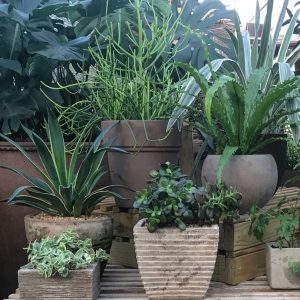
Of course this listing is just the tip of the houseplant iceberg. A few other plants pictured here include the puckered leaved peperomias, hardy Norfolk Island pines, alocasias, succulent jade plants, philodendrons, and, in the background one of our greenhouse “mascots”, a very large Monstera deliciosa, filling out its new pot. We love our plants too!
Some basic houseplant info: Light is important. Pay attention to how the sun moves through your home. Is your landscape outside filled with trees that block the light coming in on certain sides? Are there buildings that shade even western or south facing windows? Is your home bright and filled with windows that are unobstructed, or does it feel dark even on sunny days? Plants that don’t have enough light tend to “stretch”, leaning toward the sun and may be pale even with diligent fertilizing.
Plants that tolerate low light levels are the workhorses of the houseplant world. They’re also some of the best plants for beginners. Here are a few to try:
Pothos are virtually indestructible in low light and also prefer to be on the dry side. Don’t overwater and they’ll live happily in your home. Sanseveria thrive in bright light but also will add a lovely vertical accent in low light spots too. Philodendrons, spider plants, prayer plants, many ferns, and the indestructible ZZ plant are other good choices.
If you have bright, light flooded rooms with plenty of windows, the choices widen. Peace lilies prefer this light, though they’ll tolerate lower light levels too. Ficus, including ficus lyrata, the popular fiddle leaf fig, aralia, jade plants and other succulents, croton, ponytail palm, hoyas, grape ivy and aloe vera need the brightest light you can provide.
If you’re not sure you have enough light for those but want to try something other than the low-light plants above, Chinese evergreens, parlor palms, anthurium, bromeliads, ivy, creeping fig, Schefflera arboricola, fittonia, or peperomia are worth trying.
Each plant will have specific water requirements, and I remember my mom checking hers each week, watering if it was needed or simply “grooming”, removing yellow or dead leaves and clipping wayward stems.
The amount and frequency of water depend on the brightness of the light, how warm or cool the room is, and the type of plant. Moisture meters can be helpful to determine the moisture in a planter, especially if they’re large. With so much information at our fingertips, researching individual plants is easy; so learn as much as you can about your new purchase to give it the proper care.
Healthy plants need food, and fertilizing should be done at least every two weeks during the growing season, spring through summer, and monthly in the winter when growth slows.
Even with the best conditions, indoor plants may be susceptible to insect damage. These pests might include cottony-looking mealy bugs that hide in leaf axils or along stems, spider mites (Common when humidity levels are low and, in advanced infestations, even showing webbing on plants.), scale (Usually seen as dark bumps on stems and the underside of leaves.), and aphids, soft bodied insects typically found on tender new growth.
If you tend your plants weekly you should spot insect problems early on when they’re more easily managed with a natural pyrethrum or soap spray. There are also systemic granular insecticides that can be sprinkled onto the soil. Always read the labels before using.
Houseplants not only look good and purify our indoor air, they add to our interior style, give us something to care for, and bring a little of the outside in. So, with the “comeback” of the houseplant, we say, “Cheers!”
Plants to use with caution around children and pets: Dieffenbachia, Easter lily (very toxic to cats), and ZZ plant (Zamioculcas zamifolia)
If you follow us on Instagram or Facebook you’ve probably seen a new series of shop videos – if not, follow us and check them out! They’re also on our YouTube channel under Oak Street Garden Shop – if you’d like to see more, subscribe!
By Kris Blevons

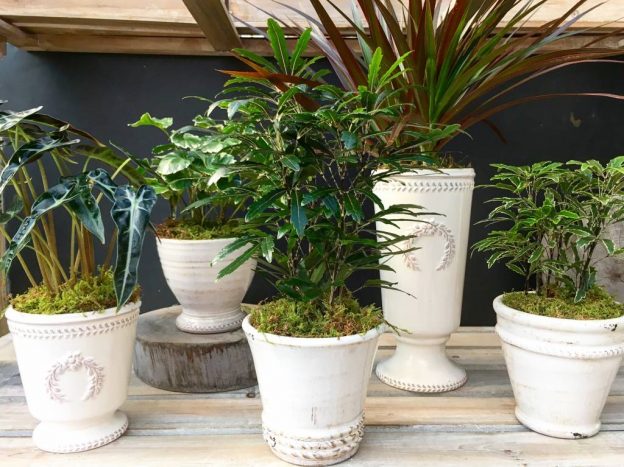
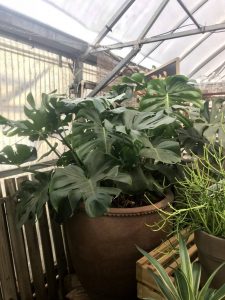
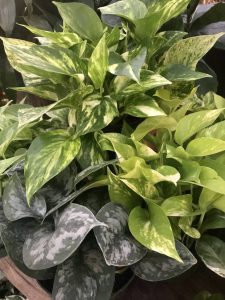
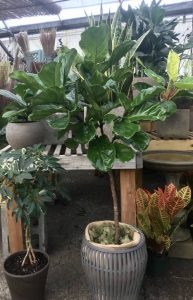
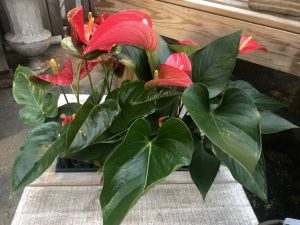
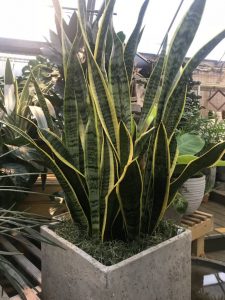
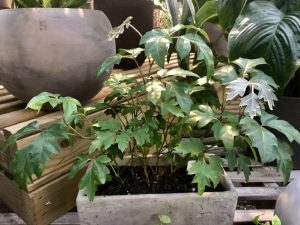
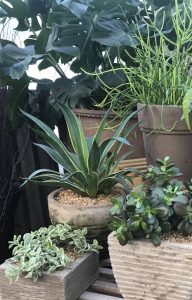
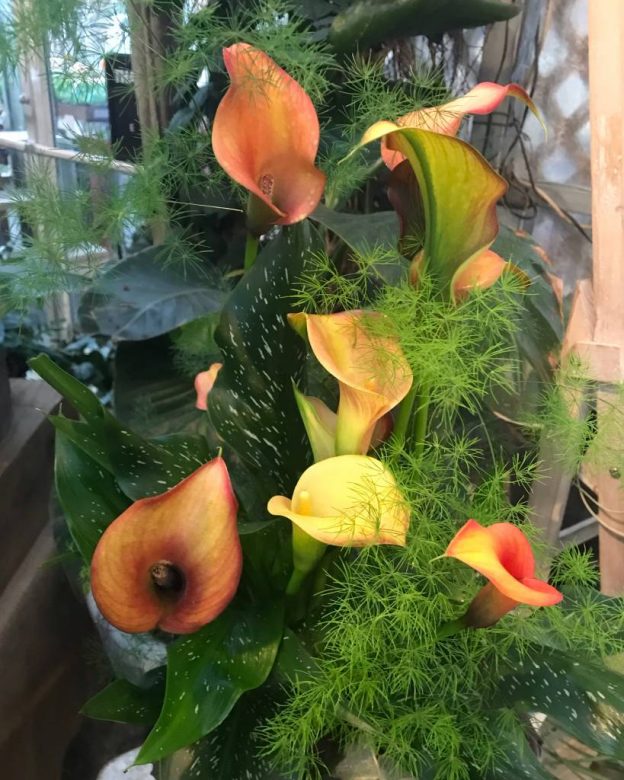
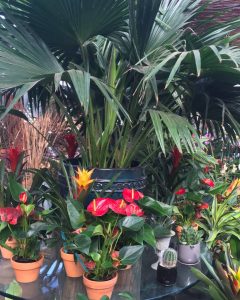
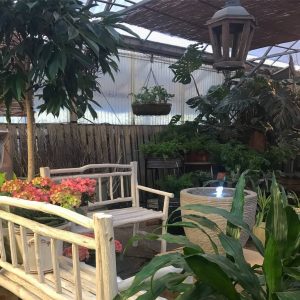
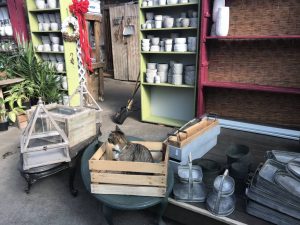
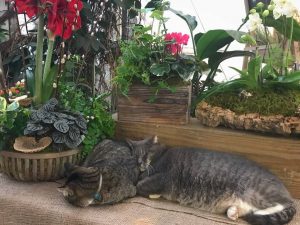
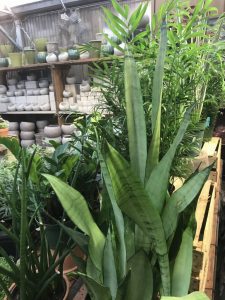
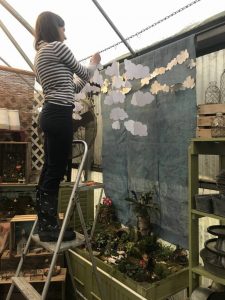
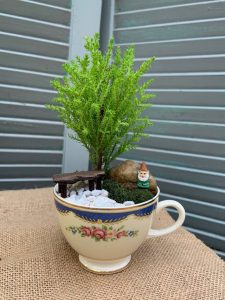
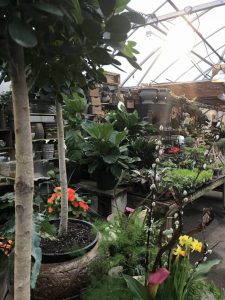
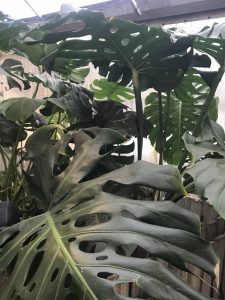

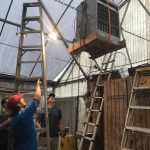
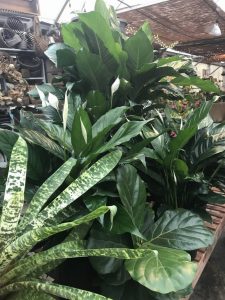
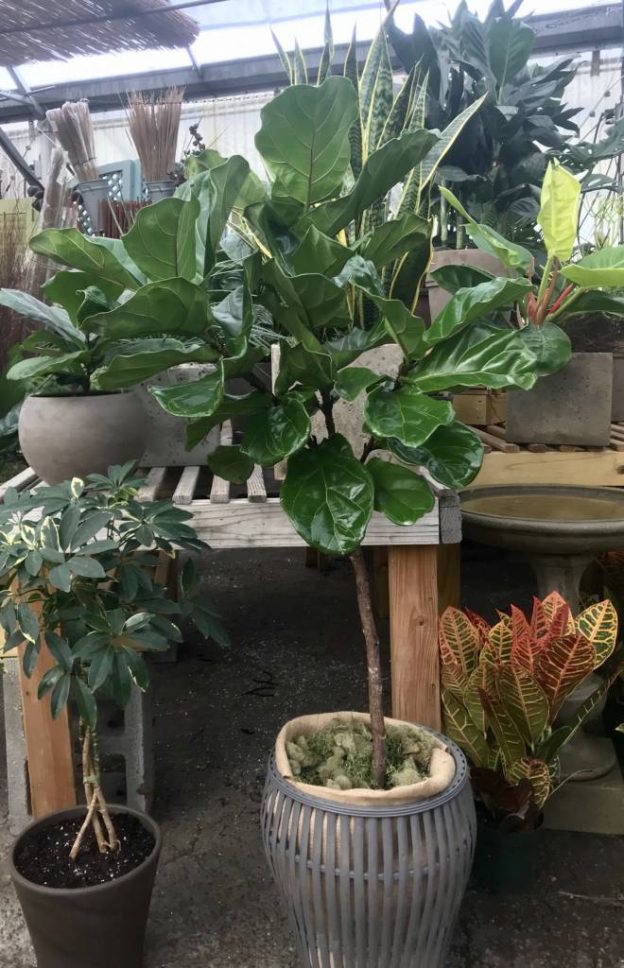
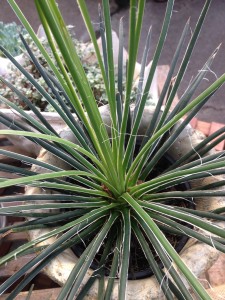
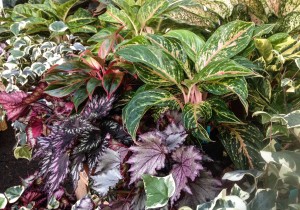
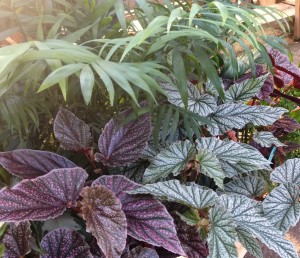
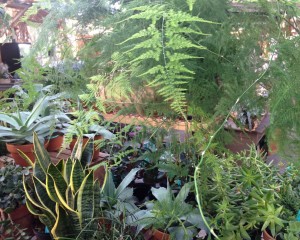
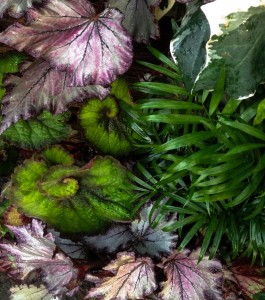
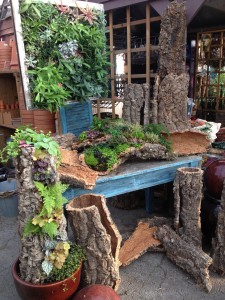
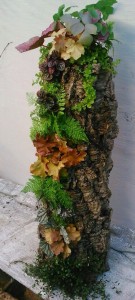
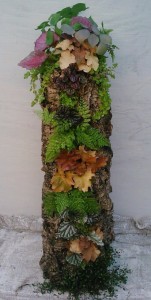 The tall one that Jamie planted utilizes houseplants which work very well in shaded areas through the summer, and some perennials. This piece will take filtered sun and clipping of the houseplants to maintain the balance of the planting. A pot was inserted in the bottom, planted, and then soil filled to the top, filling the opening all the way up to create a cool vertical piece.
The tall one that Jamie planted utilizes houseplants which work very well in shaded areas through the summer, and some perennials. This piece will take filtered sun and clipping of the houseplants to maintain the balance of the planting. A pot was inserted in the bottom, planted, and then soil filled to the top, filling the opening all the way up to create a cool vertical piece.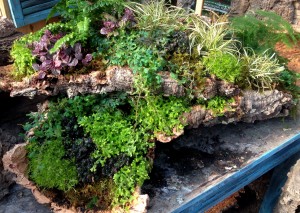 In the next planting, I took 3 of the flatter, rounded pieces and actually “stacked” them at angles, creating planting pockets and different levels and an overall shape I was pleased with. Next, perennials, including tassel ferns, ‘Metallica’ and ‘Burgundy Glow’ ajuga, golden and peacock selaginellas, Scotch moss and Carex ‘Evergold’, were added, creating sweeps of color and wispy trailers over the edges. An added bonus is that all of these plants are perennial and can be used in your landscape as they outgrow the container.
In the next planting, I took 3 of the flatter, rounded pieces and actually “stacked” them at angles, creating planting pockets and different levels and an overall shape I was pleased with. Next, perennials, including tassel ferns, ‘Metallica’ and ‘Burgundy Glow’ ajuga, golden and peacock selaginellas, Scotch moss and Carex ‘Evergold’, were added, creating sweeps of color and wispy trailers over the edges. An added bonus is that all of these plants are perennial and can be used in your landscape as they outgrow the container.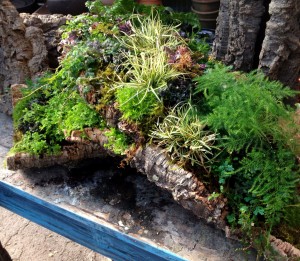 Both of these have been lined before planting but will drain over the edges in the case of the stacked pieces and down through the bottom of the planting in the tall piece. We picture them in areas of restful shade, adding their green presence to woodland surroundings…We hope you enjoy our creations as much as we enjoyed making them!
Both of these have been lined before planting but will drain over the edges in the case of the stacked pieces and down through the bottom of the planting in the tall piece. We picture them in areas of restful shade, adding their green presence to woodland surroundings…We hope you enjoy our creations as much as we enjoyed making them!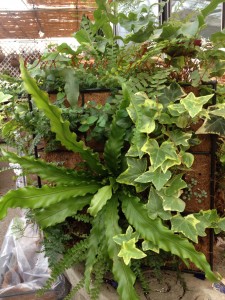
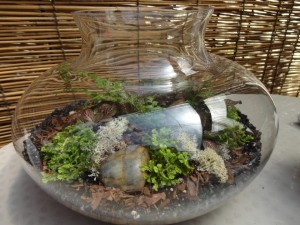
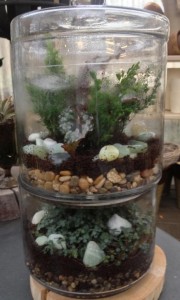
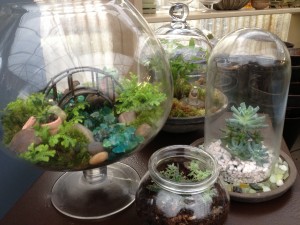
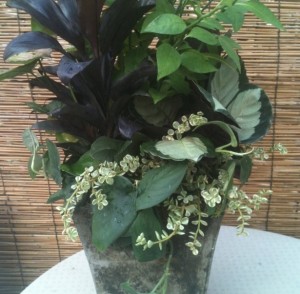 Container gardening – putting together great combinations that are long lasting and beautiful is something we love to do! The planters here show groupings of houseplants (yes, you can use combinations of houseplants too!) chosen for the variation of leaf color, shape and size…and perfect for a summer on a shady porch or patio.
Container gardening – putting together great combinations that are long lasting and beautiful is something we love to do! The planters here show groupings of houseplants (yes, you can use combinations of houseplants too!) chosen for the variation of leaf color, shape and size…and perfect for a summer on a shady porch or patio.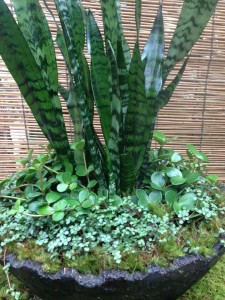 One is a loose, informal combination and the second arrangement is much more structured – see the difference?
One is a loose, informal combination and the second arrangement is much more structured – see the difference?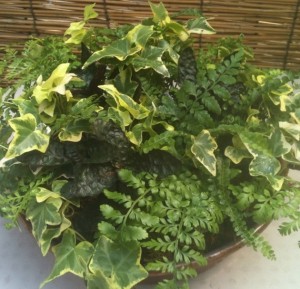 The last example is a small planter filled to the brim (don’t be skimpy with your plants!) and designed to be seen on a table or shelf. We’ll continue to showcase more container ideas to spark your imagination and creativity and help you choose the perfect combinations for your home and garden. We may be in the middle of winter now, but spring is fast approaching and we want you to enjoy creating your own container gardens – or, if you’re in the area we’re always glad to help. Happy planting!
The last example is a small planter filled to the brim (don’t be skimpy with your plants!) and designed to be seen on a table or shelf. We’ll continue to showcase more container ideas to spark your imagination and creativity and help you choose the perfect combinations for your home and garden. We may be in the middle of winter now, but spring is fast approaching and we want you to enjoy creating your own container gardens – or, if you’re in the area we’re always glad to help. Happy planting!